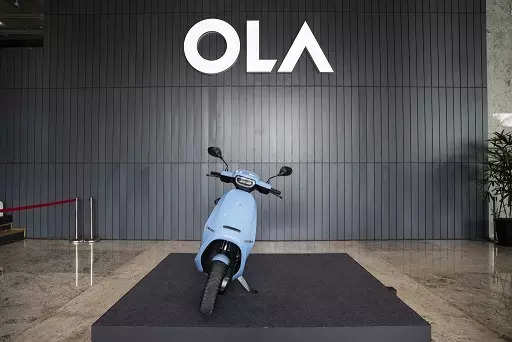Also in this letter:
■ Ola’s dream of world’s biggest e-scooter factory hits hurdles
■ Mamaearth parent acquires content platform Mompresso
■ Google and others join retreat from CES over rising cases
The ETtech Top 5 team will be taking some time off as we wind down after what’s been a year of non-stop news in the technology sector. We’ll be back on January 3, Monday with a brand new edition. Happy holidays to you and your family.
The top tech trends to look out for in 2022
Phew! Another pandemic year has gone by. Welcome to yet another year of hope and recovery. In 2021 we saw many tech trends accelerate in response to the ‘living with Covid’ world. If the past two years have proved anything, it’s that the world needs to adapt quickly to our new reality. In 2021, companies focused on operational agility more than ever before.
Tech has sustained us through the pandemic and continues to redefine and restructure how we work, live and interact. But what does next year hold in store?
The ETtech team picked the biggest technology trends to watch out for in 2022 and beyond.
Automation: Automation tech has entered everyone’s daily lives in different ways and most of us don’t even realise it. Self-driving vehicles, the data cleaning system of your smart devices, and smart home notifications are some basic examples of automation technology.
Around half of all existing work could be automated in the next few decades, as next-level process automation and virtualisation become more commonplace.
“By 2025, more than 50 billion devices will be connected to the Industrial Internet of Things (IIoT),” McKinsey predicts. Robots, automation, 3D-printing, and more will generate around 79.4 zettabytes of data per year.
Metaverse: Popularised by Snow Crash, a 1992 sci-fi novel by Neal Stephenson, the metaverse refers to a collection of shared online worlds in which physical, augmented, and virtual reality converge. People can hang out with friends, work, visit places, buy goods and services, and attend events. While many virtual worlds exist online, users currently can’t move between them while retaining their identities and assets.
The eventual metaverse could solve this problem, turning disparate online worlds into a single, seamless entity. It has even been dubbed the next evolution of the internet.
Some tech CEOs are betting on Metaverse as being the successor to the mobile internet. In 2021, CEOs of tech companies from Microsoft to Match Group discussed their roles in building the metaverse. In October 2021, Facebook renamed itself to Meta to reflect its new metaverse focus.
Related coverage
Blockchain and DLTs: Blockchain and other distributed ledger technologies (DLT) are changing the nature of doing business and helping companies reimagine how they manage tangible and digital assets.
As companies adopt blockchain and DLT, creative use cases are cropping up, transforming the nature of doing business across organisational boundaries. The use cases include self-sovereign data, trusted data-sharing, supply chain transparency among others.
Also Read: Blockchains and their disruptive power
Tempted by the promise of safer, more efficient transactions, the financial services industry has been leading the way in making full use of blockchain and DLT platforms.
Ola’s dream of world’s biggest e-scooter factory hits hurdles

Ola Electric, which has pledged to build the world’s largest electric scooter factory in Tamil Nadu, doled out a handful of brightly-hued bikes at an event earlier this month. It was attended by founder Bhavish Aggarwal, who came to thank some 100 customers who brought along family and friends.
Yes, but: Behind the scenes, Ola isn’t living up to its lofty ambitions. Mass production of its e-scooters is likely to be pushed back until at least January, Bloomberg reported, citing people familiar with its operations.
Also Read: Ola Electric delivers first 100 scooters without some promised features
Only 150 units a day: The company, which has already delayed initial deliveries to mid-December from October, is pledging to fulfil the rest of the orders by February.
But sources told Bloomberg that Ola, backed by heavyweights such as SoftBank and Tiger Global, is able to make only as many as 150 units a day — a slow pace considering the company said it has received 90,000 orders.
The company’s body shop is operating at half capacity and its paint shop isn’t up and running, the sources said.
Significance: Ola Electric’s ability to deliver on its promise will also rub off on its parent company ANI Technologies, which is planning an IPO in Mumbai next year.
Industry in microcosm: Hobbled by the global chip shortage, and what analysts call an over-reliance on imported components, Ola Electric’s woes are a microcosm of the challenges that India’s automobile industry will have to navigate as it pivots toward electric vehicles.
They also underscore the hurdles India, the world’s third-biggest emitter, may face as it attempts to become net carbon zero by 2070.
Angry customers: Meanwhile, customers waiting for their bikes are already voicing their unhappiness. When Ola began taking orders in September, it said deliveries would begin in October, which later got pushed to November and then to December 15.
Many disgruntled customers — some of whom paid the entire Rs 99,999 ($1,323) upfront — have taken to social media.
Reliance on China: India currently imports around 70% of electric vehicle parts from China, a situation that deprives local carmakers of an indigenous and reliable supply chain — a critical component for mass production. That’s worked to keep EVs in the nation at 1% of overall annual auto sales, versus 30% in some parts of China.
Tweet of the day
Mamaearth parent acquires content platform Mompresso

Honasa Consumer Pvt. Ltd (HCPL), the parent company of Mamaearth and The Derma Co. said it has acquired female-oriented content platform Momspresso and associated influencer engagement platform Momspresso MyMoney for an undisclosed amount.
Terms of the deal: Post-acquisition, Momspresso will continue to function independently and the founding team with CEO Vishal Gupta, CTO Asif Mohamed and COO Prashant Sinha, will continue to lead the operations and manage the business as an independent entity. All three of them are also cofounders of the company.
What will the funds be used for? Momspresso will use the fresh capital for enhancing the team, building data-science capability and investing in technology to drive scale and efficiencies.
Quote: “We have experienced exponential growth due to our constant connect with community and consumers and the partnership with Momspresso will further scale up our creator network,” HCPL co-founder and CEO Varun Alagh said.
D2C consolidation: This comes on the back of a spate of consolidation in the broader D2C segment led by The Good Glamm group which has acquired a bunch of smaller brands in the past year.

The Good Glam Group, which owns the MyGlam brand, acquired celebrity and influencer talent management network MissMalini Entertainment in a cash and stock deal, we reported earlier this month. This was the fifth acquisition by the group this year after The Mom’s Co, Baby Chakra, ScoopWhoop and PopXo.
ETtech Deals Digest
Here’s a look at the top funding deals of the week.

GM, Google, others join retreat from CES over rising Covid cases

US automaker General Motors Co, Alphabet Inc.’s Google and its self-driving auto-technology company Waymo joined the companies who have backed out of the Consumer Electronics Show (CES) in-person early next month due to rising Covid-19 infections.
Omicron scare: CES in the past has attracted more than 180,000 people from around the world to a sprawling set of casinos and convention spaces in Las Vegas, serving as an annual showcase of new trends and gadgets in the technology industry.
The Omicron variant of Covid-19 was first detected last month in Hong Kong and southern Africa, sparking global concerns about a fast-spreading new version of the virus. Coronavirus infections have soared wherever highly infectious Omicron has spread, triggering new restrictions in many countries.
Events go virtual: GM Chief Executive Mary Barra had been scheduled to give a keynote speech at the annual conference on Jan. 5, during which the company would have shown its electric Silverado pickup truck for the first time. Barra will still make the speech and presentation remotely, a spokesman said.
Google said it made the decision to pull out after “closely monitoring the development of the omicron variant,” adding that it would continue to “identify and support virtual opportunities.”
Waymo said in a blog post that it hopes to participate virtually if possible at the Las Vegas event. ByteDance-owned TikTok said it would hold a virtual event for partners and advertisers. Also on Thursday, Intel Corp said it would minimise staffing at CES.
Several other companies, including Facebook parent Meta Platforms Inc, Twitter Inc, Lenovo Group, AT&T Inc and Amazon.com Inc dropped in-person attendance plans earlier this week, saying they would not send employees out of caution over the spread of Omicron.
Show to go on: CES officials said the event will still be held in person from Jan. 5-8 with “strong safety measures in place,” including vaccination requirements, masking and availability of Covid-19 tests.
“Our mission remains to convene the industry and give those who cannot attend in person the ability to experience the magic of CES digitally,” CES said in a statement. “CES 2022 will go forward as important innovation for world health and safety, mobility and solving problems will be exhibited.”
China targets online platforms in quest to ‘clean up’ internet

It’s been a tough year for Chinese tech firms as Beijing’s crackdown on the once-freewheeling sector has intensified.
Now, the country’s cyber regulator said that it would scrutinise online platforms such as social media networks and video-sharing sites to clamp down on fake accounts and information as part of its drive to “clean up” the internet.
Two-month op: The Cyberspace Administration of China (CAC) said it would launch a two-month special operation to target deceptive online behaviours, ranging from boosting engagement figures to paying for fake fans and reviews.
The investigation comes against the backdrop of a wide-ranging crackdown by regulators on several sectors, with officials tightening oversight of companies in technology, real estate, gaming, education, cryptocurrencies and finance.
It all started with Alibaba: China’s crackdown on domestic tech companies dates back to last October, days before Alibaba subsidiary Ant Group was set to raise up to $34 billion in an IPO. It would have been the world’s largest public offering, beating the $29.4-billion listing of Saudi Aramco in late 2019. At the time, Ant was worth an estimated $320 billion.
Then, Alibaba co-founder Jack Ma, one of the country’s most high-profile billionaires, criticised Chinese regulators, saying they were stifling innovation. The Chinese government responded by halting Ant’s IPO and filing an antitrust case against Alibaba. Ma disappeared from public view.
Today’s ETtech Top 5 newsletter was curated by Arun Padmanabhan in New Delhi and Zaheer Merchant in Mumbai. Graphics and illustrations by Rahul Awasthi.
























